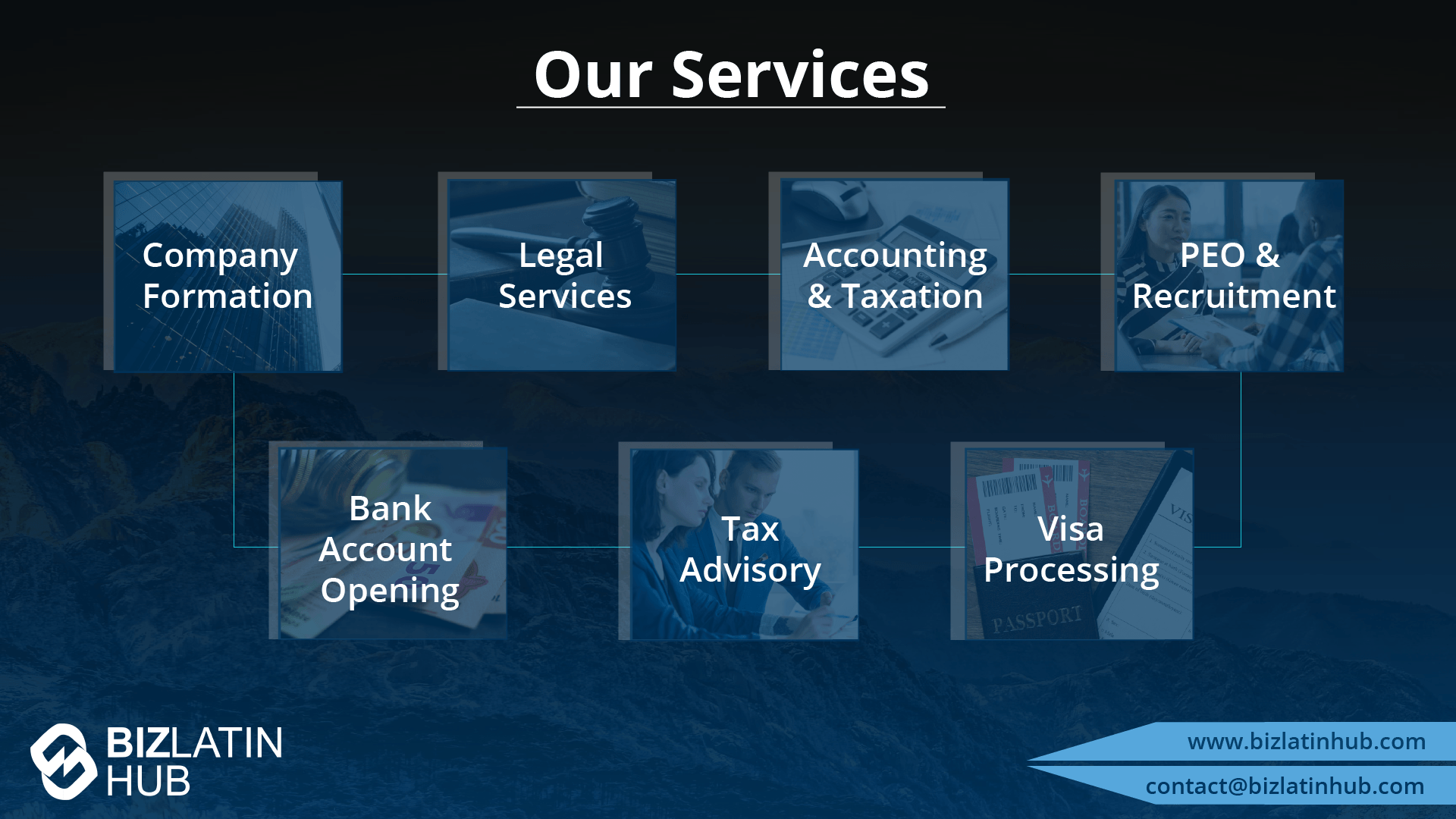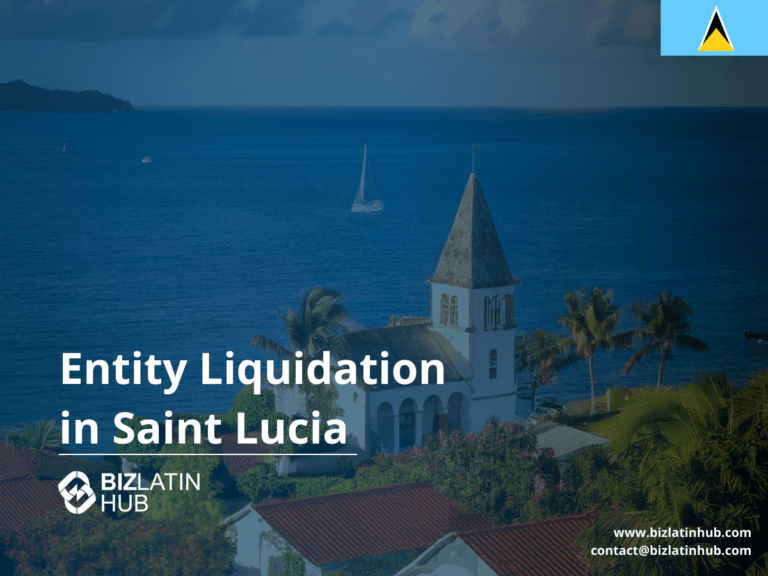Closing a company in Saint Lucia involves specific legal and financial steps. This guide explains the process for any business entity, including a domestic company or an International Business Company (IBC). Just like company formation in Saint Lucia, everything must be done by the book. It covers all stages, from the first decision to the final deregistration. This guide details the six essential steps for a voluntary winding-up of a solvent company, ensuring the process complies with the relevant Companies Act or IBC Act.
Key Takeaways: Company Liquidation in Saint Lucia
| What is a voluntary liquidation? | A voluntary liquidation is the process of winding up a solvent company that is initiated by the company’s own shareholders. It is not a bankruptcy proceeding. |
| Are shareholder approvals necessary? | A special resolution passed by the company’s shareholders is required. |
| What is the role of a liquidator? | The appointed liquidator is responsible for selling the company’s assets, paying off all its creditors, and then distributing any remaining funds to the shareholders. |
| Do IBCs have a different process? | The process applies to both Domestic Companies and International Business Companies (IBCs), but the latter follow a slightly different and faster framework. |
| What are the final steps to dissolve the company? | Once the liquidator has settled all the company’s affairs, they file the Articles of Dissolution, which formally requests the Registrar to dissolve the company and remove it from the register. |
The 6-Step Process for Voluntary Liquidation
Expert Tip: Distinguishing Liquidation for Domestic vs. IBC Companies
From our experience, it is critical to understand that while the overall process is similar, the specific legal framework for liquidation depends on your company type. A Domestic Company is liquidated under the Companies Act, whereas an International Business Company (IBC) is liquidated under the International Business Companies Act.
The IBC Act often provides for a more streamlined and faster process. When engaging a professional to assist with liquidation, confirm they have specific expertise with the correct Act for your entity type to ensure the procedure is handled efficiently and correctly.
Step 1: Hold a Shareholders’ Meeting
The shareholders must pass a special resolution to place the company into voluntary liquidation. A company liquidation in Saint Lucia begins in one of two ways:
- Voluntary Liquidation: Shareholders pass a resolution to close the company. This is the most common method for solvent companies.
- Compulsory Liquidation: A creditor or the company petitions the court to order the closure. This usually happens when the company cannot pay its debts.
Step 2: Appoint a Liquidator
In the same resolution, the shareholders appoint a liquidator to oversee the entire winding-up process. Shareholders or the court can make this appointment. The liquidator takes control of the company and manages an orderly and lawful closure.
A liquidator’s main duties are to:
- Stop all business operations.
- Identify and gather all company assets.
- Inform creditors and pay all valid debts.
- Give any remaining funds or assets to shareholders.
The financial part of liquidation demands careful attention to legal rules. Non-compliance can lead to large daily fines for the company and its directors.
The liquidator’s first financial job is to find all creditors and pay the company’s debts. This includes:
- Inform Creditors: The liquidator must officially inform all known creditors about the company’s closure.
- Rank Claims: Saint Lucian case law determines how to rank creditor claims. Secured creditors with first charges get paid before other creditors.
- Pay Liabilities: The liquidator uses company assets to pay all debts and taxes.
Complete Tax Reporting
The company must have a clear record with the Department of Internal Revenue before it can close. This includes:
- Get a Tax Account Number: Every company needs a Tax Account Number for reporting.
- Pay Tax Liabilities: Saint Lucia has a 30% tax on income made within the country. All taxes must be paid.
- File Final Tax Reports: The liquidator files all final tax reports and gets clearance from the tax authority.
Step 3: Publish a Notice of Liquidation
A notice of the liquidator’s appointment and the commencement of the liquidation must be published in the local Gazette and a newspaper.
Correct documentation is essential for a legal liquidation. The process requires several key filings with the Registrar of Companies and Intellectual Property.
- Resolution to Wind Up: The official shareholder resolution to start the liquidation.
- Appointment of Liquidator: The document that formally names the liquidator.
- Registry Filings: The liquidator must file updates to the company’s register, including the release of any mortgages or charges on assets.
- Statement of Completion: After managing all debts and assets, the liquidator gives a final statement to the Registrar to confirm the process is finished.
Step 4: Settle the Company’s Affairs
The liquidator takes control of the company, sells its assets, pays all its debts and liabilities, and finalizes its business.
Step 5: Prepare Final Accounts
The liquidator prepares a final account showing how the liquidation was conducted and how the company’s property was distributed.
Step 6: File Articles of Dissolution
Once the process is complete, the liquidator files the final Articles of Dissolution with the Registrar of Companies, which leads to the company being formally dissolved. The notice must be in:
- The Official Gazette: The government’s official journal.
- A Widely Circulated Publication: A local newspaper in Saint Lucia.
Failure to publish this notice can lead to fines, which shows the importance of this final step.
When the Registrar gets the liquidator’s final statement, they will:
- Remove the Company from the Register: The company’s name is taken off the list of active companies.
- Issue a Certificate of Dissolution: This certificate is the official proof of legal dissolution. This document shows the official date of closure.
Liquidation for Different Business Types
The general process is for all companies, but some entities have small differences. The table below shows key distinctions.
| Entity Type | Key Liquidation Points | Governing Act |
|---|---|---|
| International Business Company (IBC) | Follows the standard process. Public notice in the Gazette and a local paper is mandatory. | International Business Companies Act |
| Limited Liability Company (LLC) | The company’s Articles of Association outline the dissolution process. Members’ personal assets are safe. | Limited Liability Companies Act |
| Corporation (Domestic Company) | Follows the standard process. Focuses on paying all debts to protect shareholders. | Companies Act |
The Legal Framework for Liquidation
Saint Lucia does not have a specific Insolvency Act. As a result, the legal process often uses the United Kingdom’s Insolvency Act and Rules for guidance. This is permitted under the Supreme Court Act. Relying on external law can create challenges, especially for creditor payment priority.
A key court case, FirstCaribbean International Bank (Barbados) Limited v Sunset Village Inc., provides important direction. It clarified that creditors with first charges on assets have priority and are not equal to all other creditors. This ruling shows why legal expertise is important during the creditor settlement stage.
Alternatives to Liquidation
Before choosing to liquidate, business owners can consider other paths:
- Mergers and Consolidations: An IBC can merge with another company, even a foreign one, if the laws in both places permit it.
- Asset Sale or Transfer: A company can sell its assets to another business. This can provide value without a complete closure.
Following these steps and getting legal advice helps business owners complete a company liquidation in Saint Lucia. This ensures a lawful and organized end to business operations.
Frequently Asked Questions: Liquidating a Company in Saint Lucia
A voluntary liquidation is initiated by the company’s own shareholders when the company is solvent. A compulsory liquidation is ordered by a court, typically because the company is insolvent and unable to pay its debts.
Any adult individual can be appointed as a liquidator. It is common to appoint a professional, such as an accountant or lawyer, to ensure the process is managed correctly.
The liquidator’s main responsibilities are to wind up the company’s operations, pay off all its creditors from the company’s assets, and distribute any surplus funds to the shareholders.
This is the final document filed with the Registrar. Once the liquidator has settled all the company’s affairs, they file the Articles of Dissolution, which formally requests the Registrar to dissolve the company and remove it from the register.
Biz Latin Hub can help you with company liquidation in Saint Lucia
At Biz Latin Hub, our multilingual team of company formation specialists has extensive experience in supporting foreign executives when starting a business in Latin America. We offer a complete set of services for your business needs, such as legal, accounting, and recruitment support.
You can rely on us as your main contact for entering and doing business in any of the 18 markets in Latin America and the Caribbean where we operate.
Contact us now for personalized assistance or a free quote on company formation in Latin America.
Learn more about our team and expert authors.





